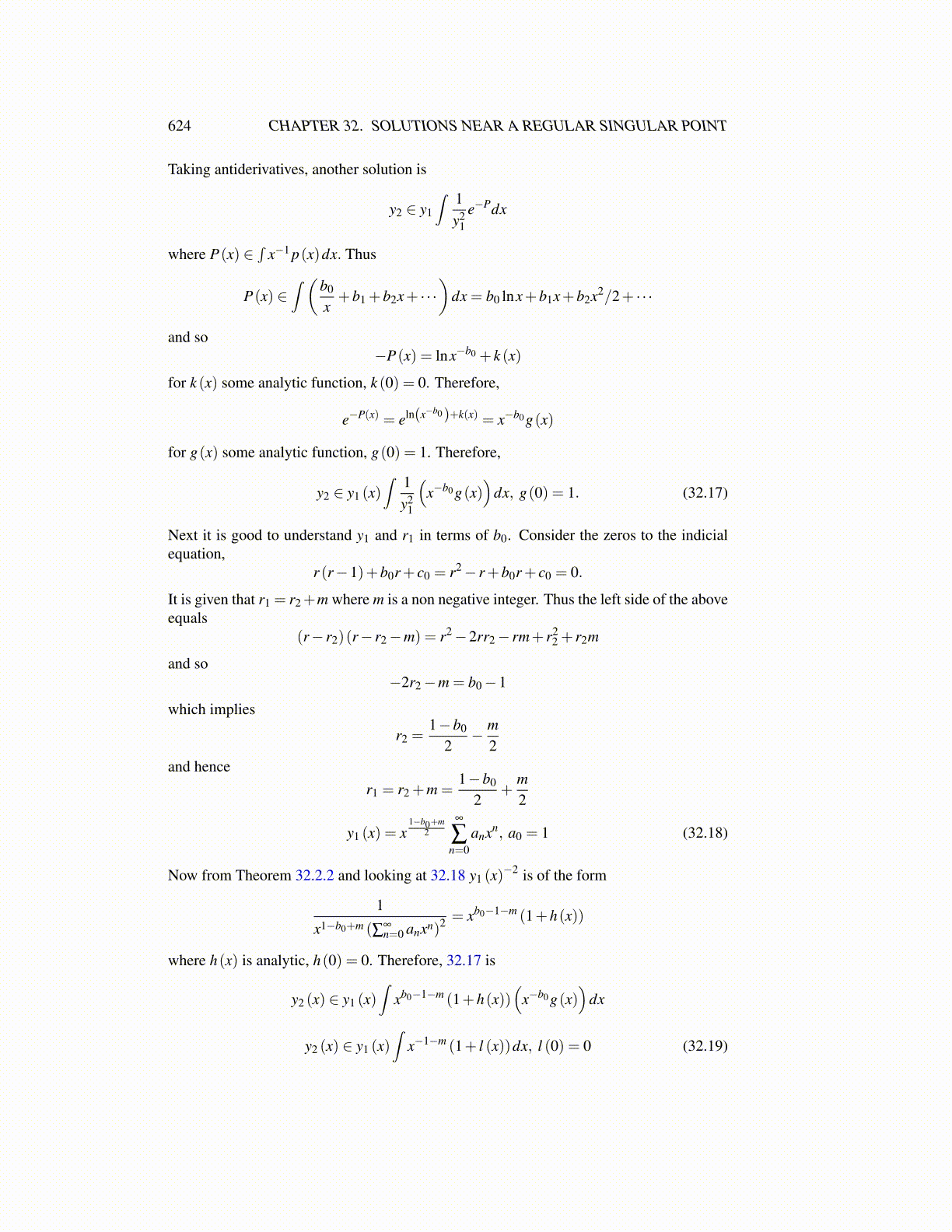
624 CHAPTER 32. SOLUTIONS NEAR A REGULAR SINGULAR POINT
Taking antiderivatives, another solution is
y2 ∈ y1
∫ 1y2
1e−Pdx
where P(x) ∈∫
x−1 p(x)dx. Thus
P(x) ∈∫ (b0
x+b1 +b2x+ · · ·
)dx = b0 lnx+b1x+b2x2/2+ · · ·
and so−P(x) = lnx−b0 + k (x)
for k (x) some analytic function, k (0) = 0. Therefore,
e−P(x) = eln(x−b0)+k(x) = x−b0g(x)
for g(x) some analytic function, g(0) = 1. Therefore,
y2 ∈ y1 (x)∫ 1
y21
(x−b0g(x)
)dx, g(0) = 1. (32.17)
Next it is good to understand y1 and r1 in terms of b0. Consider the zeros to the indicialequation,
r (r−1)+b0r+ c0 = r2− r+b0r+ c0 = 0.
It is given that r1 = r2+m where m is a non negative integer. Thus the left side of the aboveequals
(r− r2)(r− r2−m) = r2−2rr2− rm+ r22 + r2m
and so−2r2−m = b0−1
which implies
r2 =1−b0
2− m
2and hence
r1 = r2 +m =1−b0
2+
m2
y1 (x) = x1−b0+m
2
∞
∑n=0
anxn, a0 = 1 (32.18)
Now from Theorem 32.2.2 and looking at 32.18 y1 (x)−2 is of the form
1
x1−b0+m (∑∞n=0 anxn)2 = xb0−1−m (1+h(x))
where h(x) is analytic, h(0) = 0. Therefore, 32.17 is
y2 (x) ∈ y1 (x)∫
xb0−1−m (1+h(x))(
x−b0 g(x))
dx
y2 (x) ∈ y1 (x)∫
x−1−m (1+ l (x))dx, l (0) = 0 (32.19)